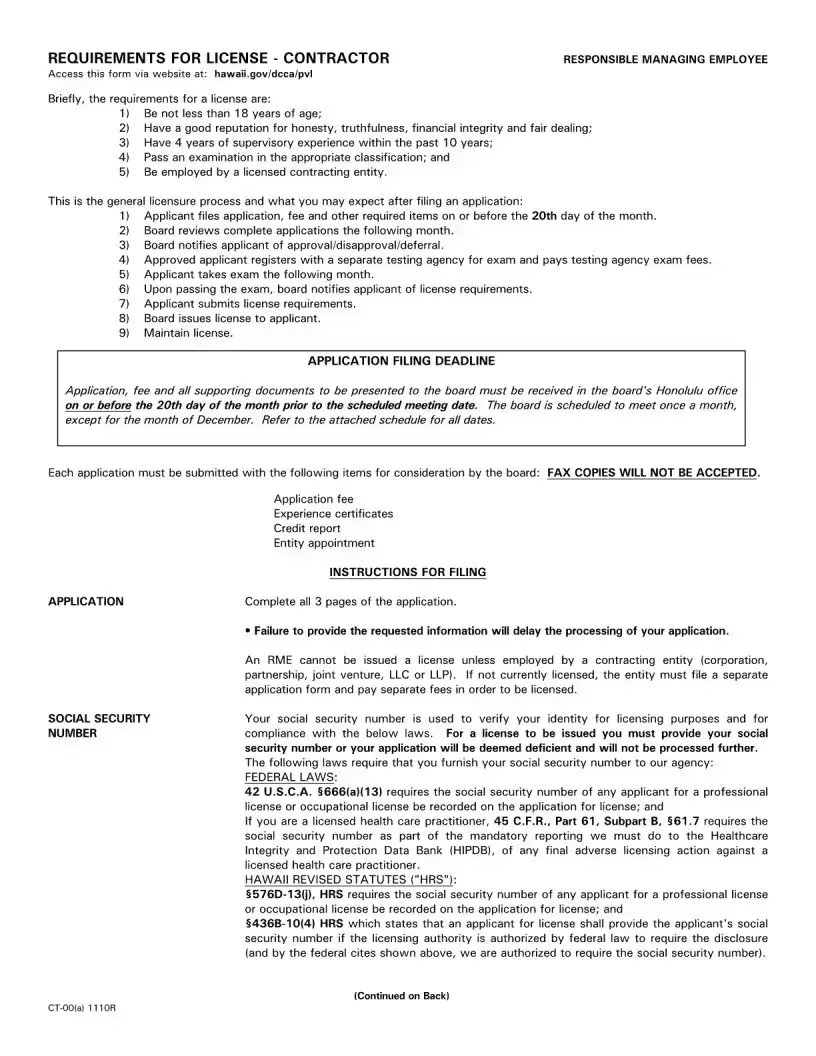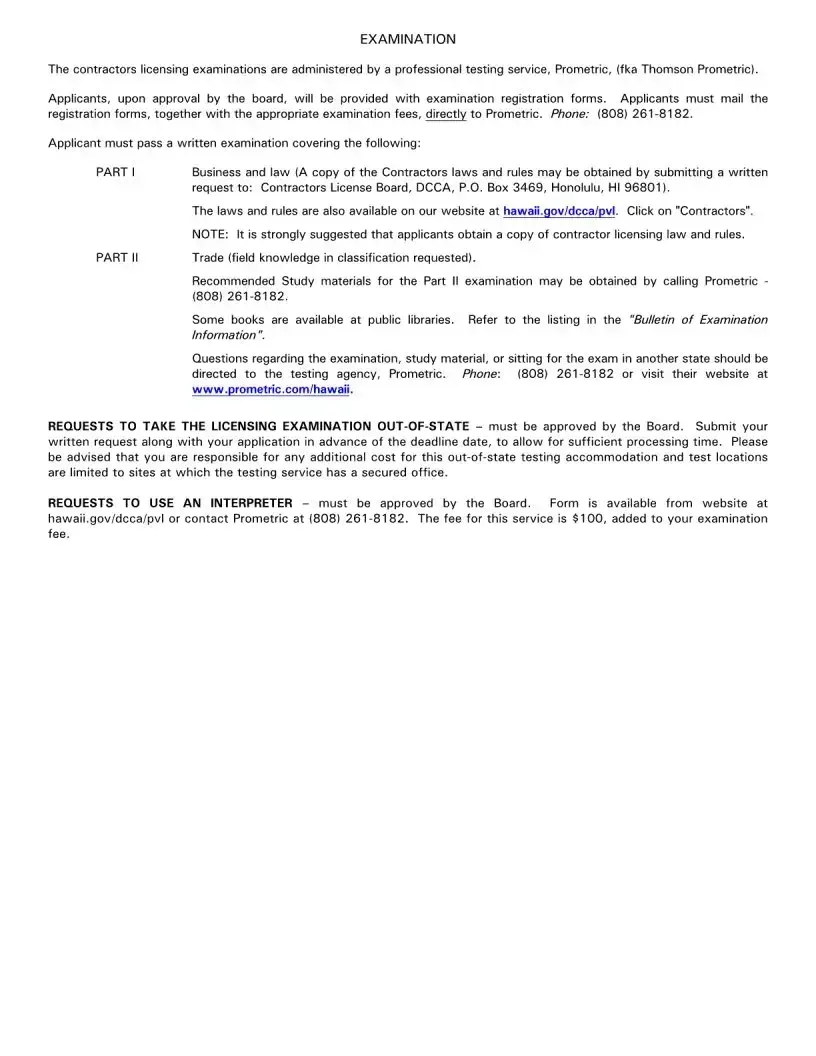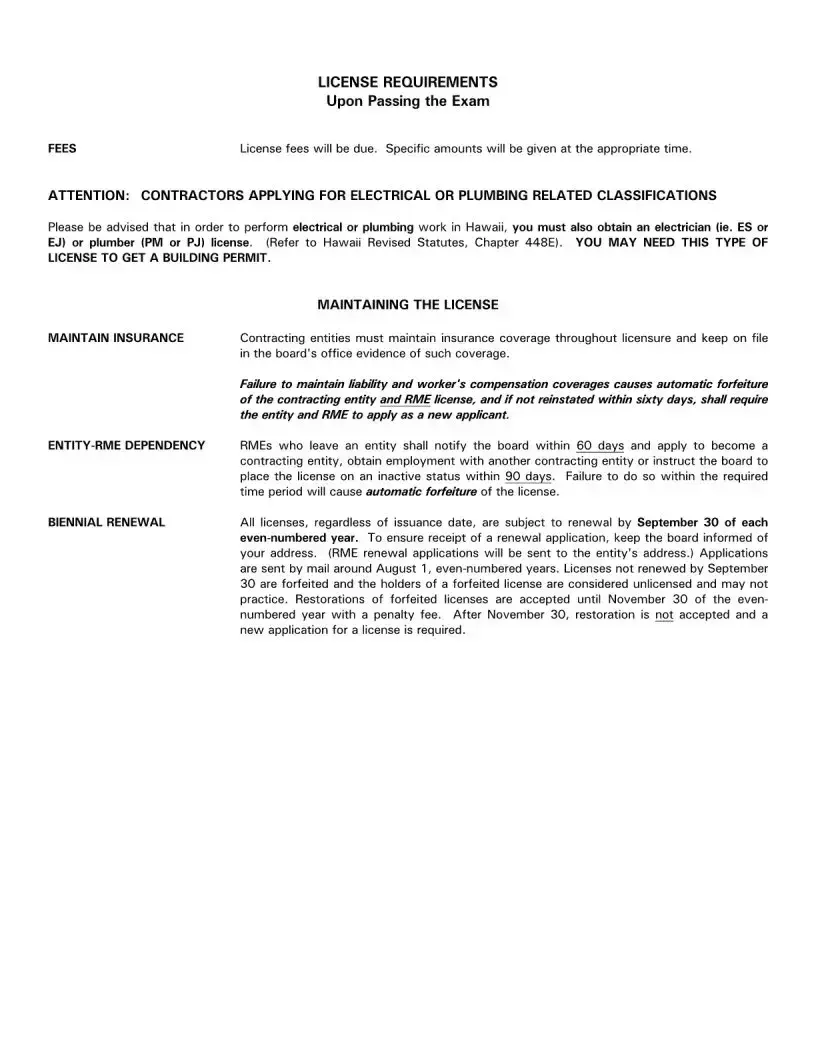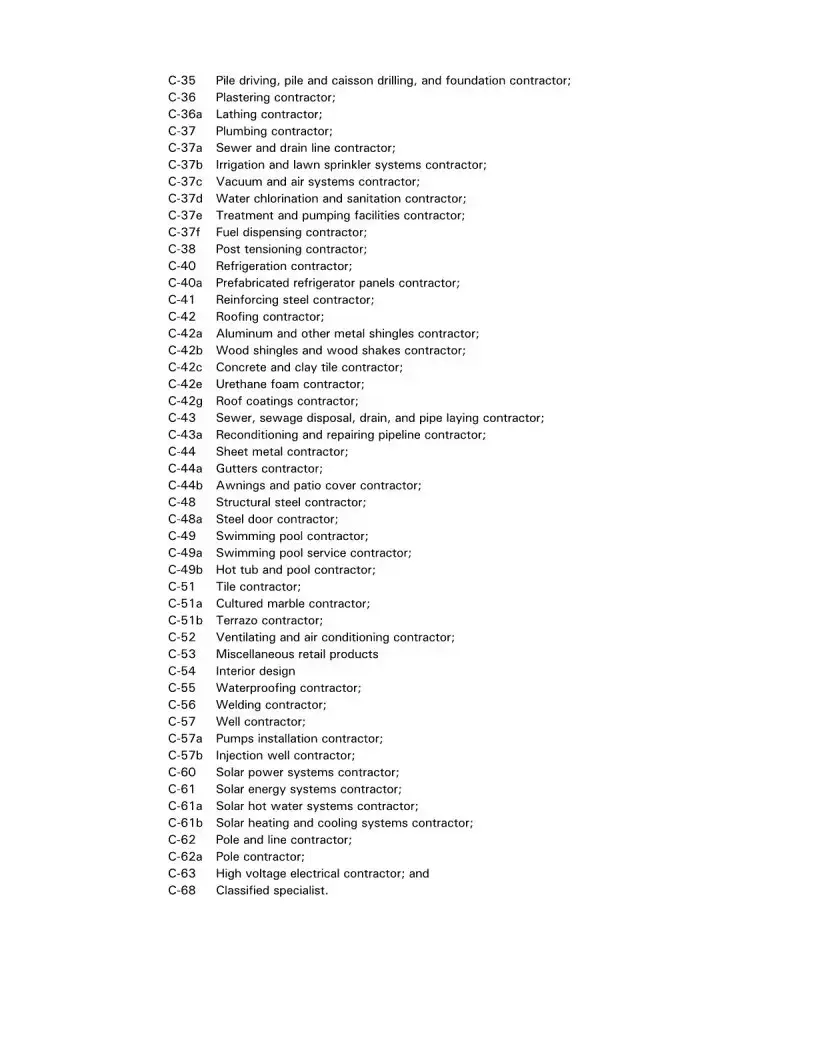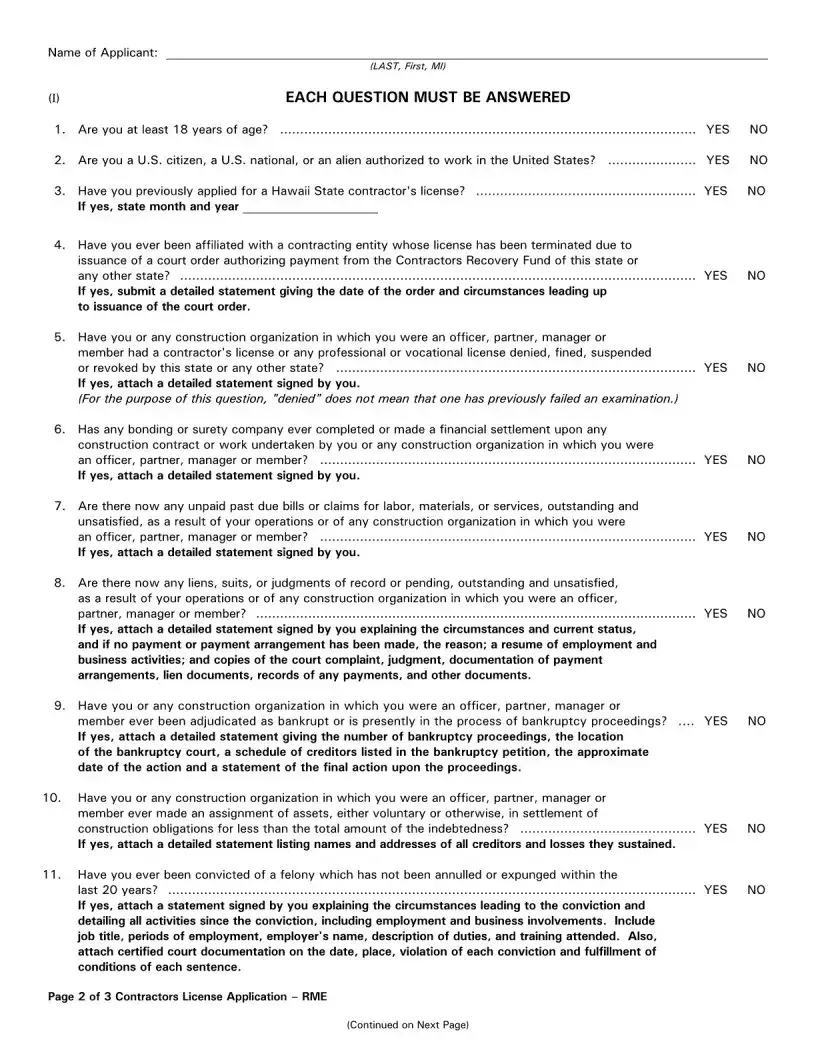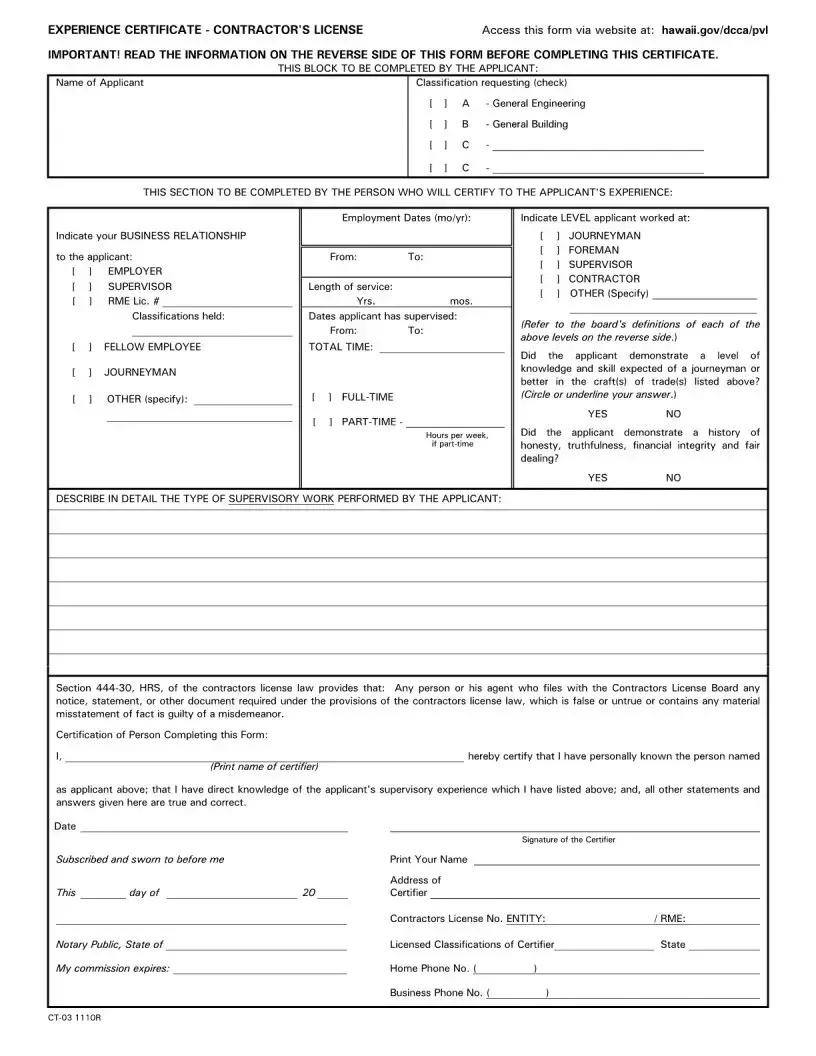In the beautiful state of Hawaii, where the construction industry plays a vital role in both the economy and the aesthetic of the islands, there exists a crucial document that ensures projects are executed with the highest standards of responsibility and professionalism. This document, known as the Responsible Managing Employee (RME) form, is a testament to Hawaii's commitment to maintaining quality and accountability in construction work. The essence of the RME form lies in its requirement for construction companies to designate an individual who will oversee project operations, ensuring compliance with state regulations and fostering a culture of excellence on the job site. This individual, the RME, stands as a pillar of integrity, with the form serving as a formal acknowledgment of their pivotal role in the construction process. Through this documentation, the state of Hawaii safeguards its built environment, making certain that each construction endeavor is led by someone not only with the requisite knowledge and experience but also with a deep sense of responsibility towards community, safety, and environmental stewardship. The RME form, therefore, is not merely paperwork; it is a linchpin in the arch of Hawaii's construction industry standards, holding critical significance for contractors, workers, and the wider community alike.
